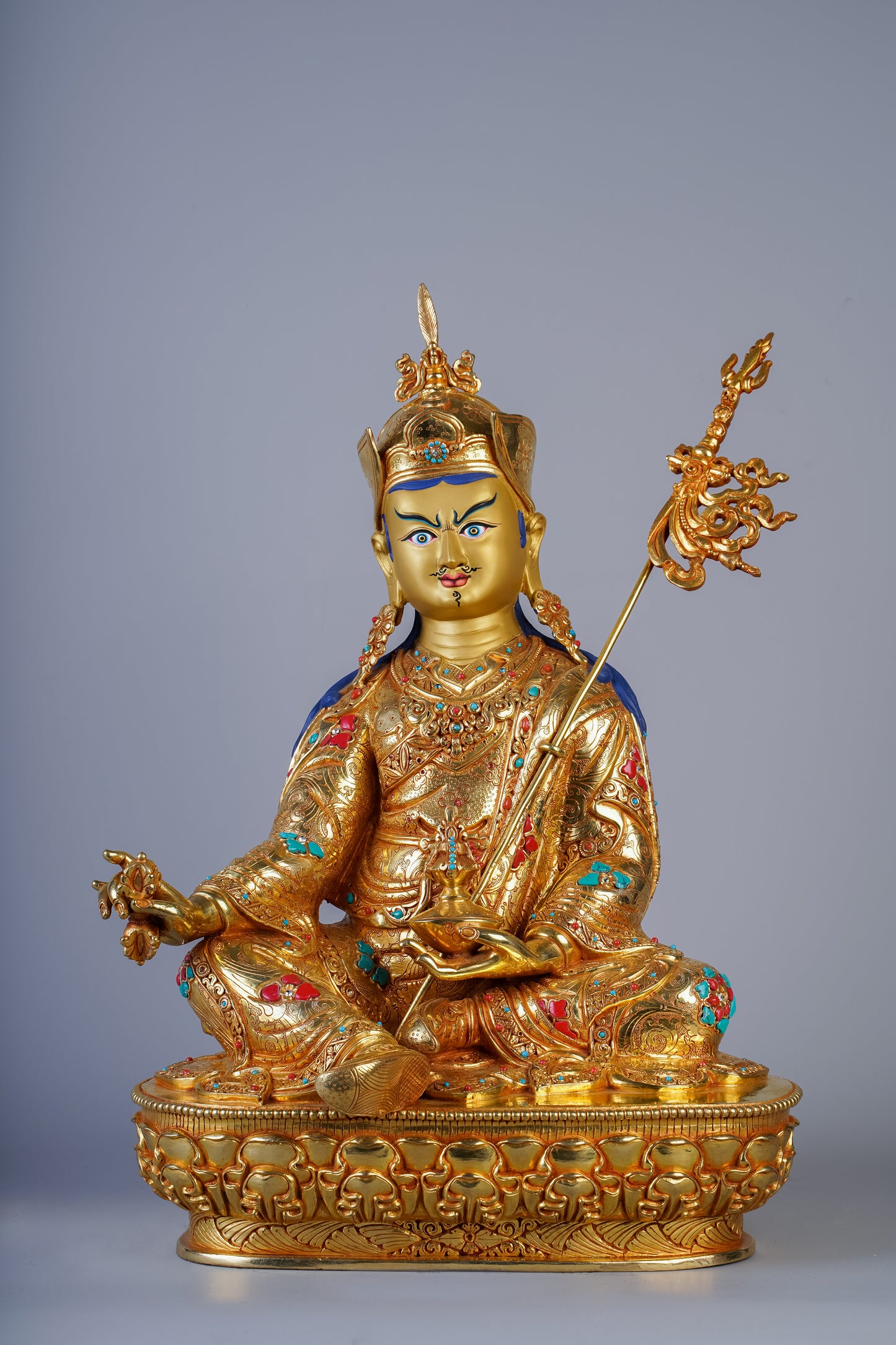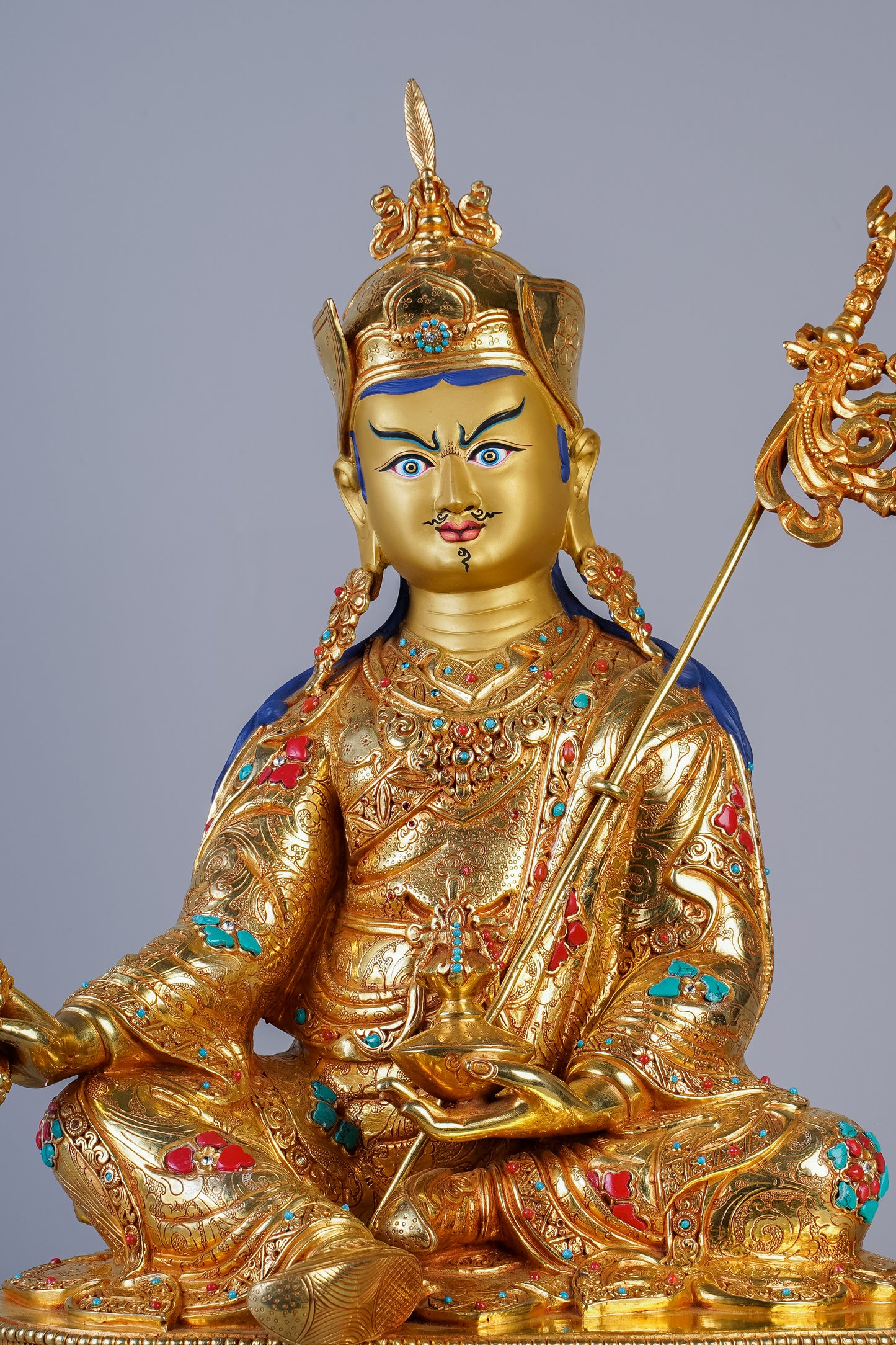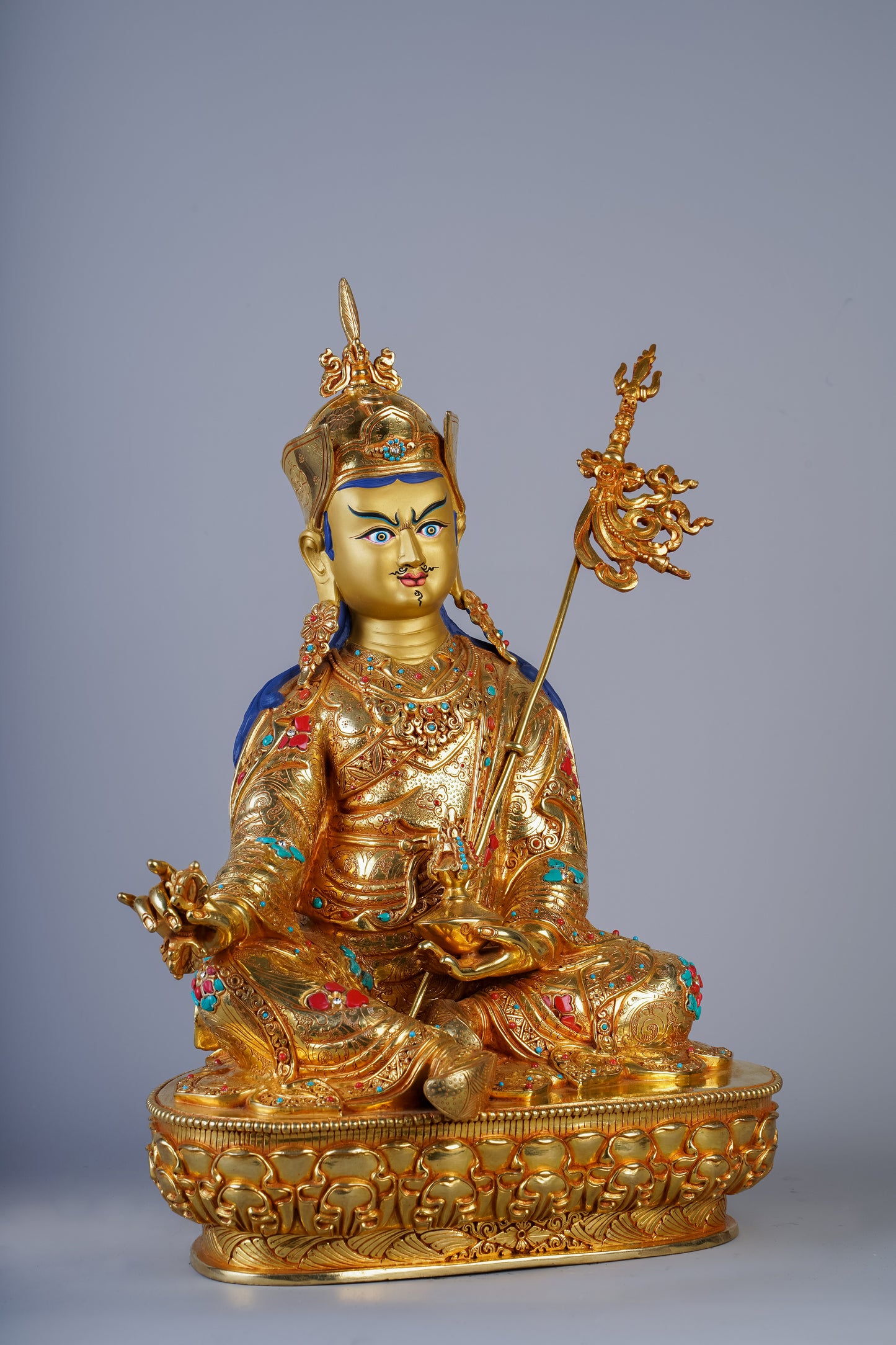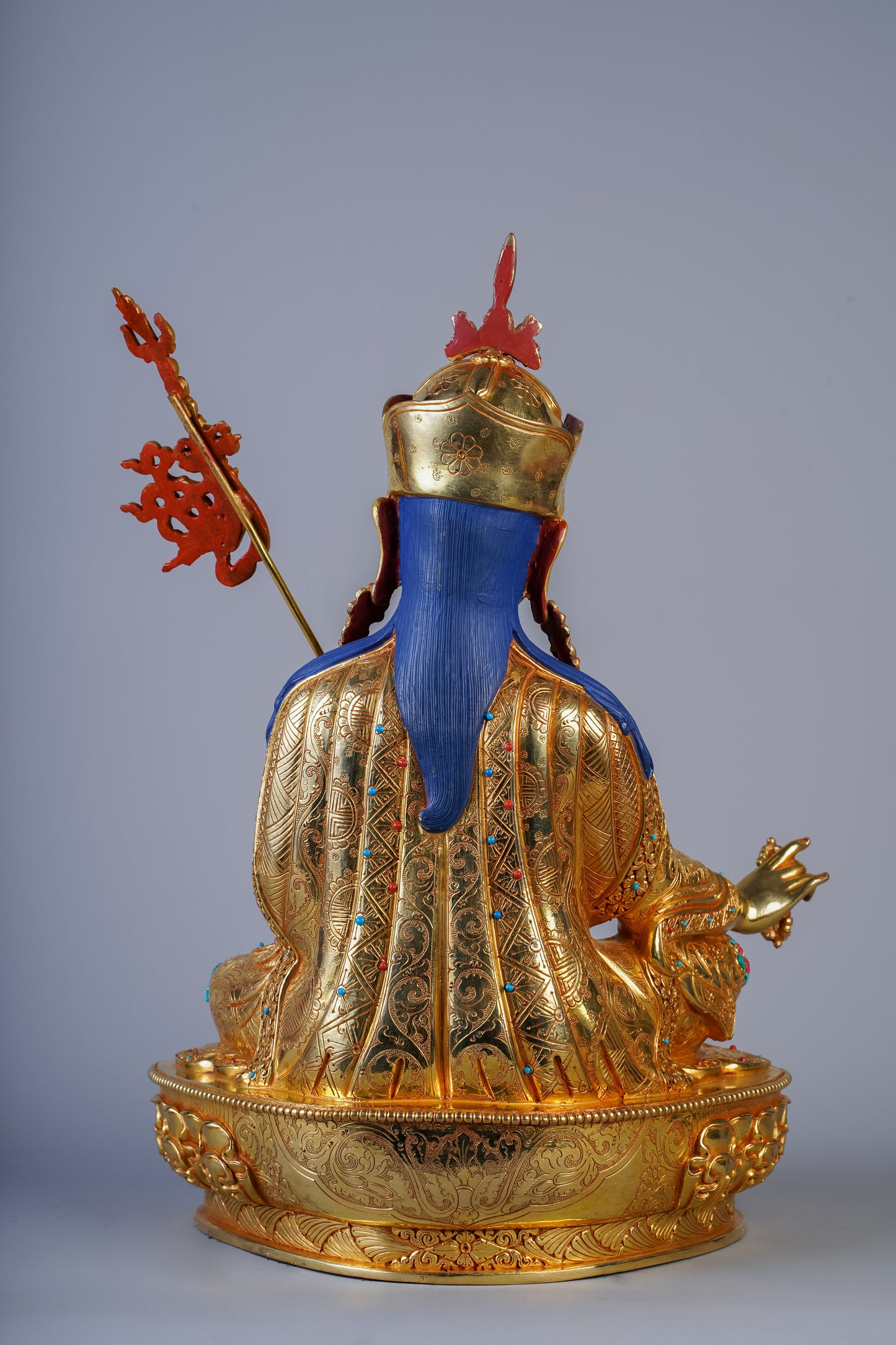Arhat Handicraft Private Limited
12 inch/ 35 cm Guru Padmasambhava | པདྨ་འབྱུང་གནས། | 莲花生大士
12 inch/ 35 cm Guru Padmasambhava | པདྨ་འབྱུང་གནས། | 莲花生大士
Couldn't load pickup availability
Introducing our exquisite 12-inch Guru Padmasambhava Statue, a masterpiece handcrafted in the historic city of Patan, Nepal. This stunning sculpture is made of copper, serving as the base metal, and plated with gold for a touch of opulence. Weighing 4.2 kg, it exudes a sense of grace and reverence.
The face of the Padmasambhava statue is meticulously adorned with fine gold dust and acrylic paint, showcasing intricate details that bring the spiritual essence to life. This statue is a symbol of divinity and cultural richness, perfect for both spiritual practitioners and art enthusiasts.
Guru Padmasambhava, also known as the "Lotus-Born," holds significant importance in Tibetan Buddhism. The iconography of the deity is characterized by his peaceful expression, adorned with various ornaments and seated in a meditative posture. His right-hand holds the vajra, symbolizing skillful means, while the left-hand holds a skull cup filled with the elixir of immortality. The lotus flower upon which he sits signifies purity and enlightenment.
Bring home a piece of spiritual and artistic heritage with our Guru Padmasambhava Statue – a harmonious blend of craftsmanship and divine symbolism.
Dimensions
Dimensions
x x
Materials
Materials
Shipping & Returns
Shipping & Returns
Delivery
We are pleased to offer free shipping on all orders. Based on availability, with assurance of a dependable service, we utilize UPS, DHL or FedEx for our standard courier deliveries, which generally arrive within 6-12 business days. Please rest assured that all items are fully insured during transit, providing you with reassurance throughout the process.
Return Policy
We kindly accept returns within 14 business days, and we encourage you to explore our Returns page or reach out to our customer service team for assistance in navigating this process. Your satisfaction is very important to us, and we are committed to ensuring a positive experience for you.
Care Instructions
Care Instructions
Use a clean, dry brush: Maintain the pristine condition of your item by strictly using a clean, dry brush for dust removal. This is especially important for painted surfaces, such as gold accents.
Avoid touching with wet, sweaty, or dirty hands: Preserve the optimal appearance of your piece by never touching painted surfaces with wet, sweaty, or dirty hands.
Spot Cleaning Tips: For any spots, use a clean eraser and apply it gently. However, success is not guaranteed, so prevention is crucial to avoid stains on painted surfaces.
Not recommended for outdoor display: To ensure longevity, keep your piece indoors and do not display it outdoors. This will help preserve its quality and appearance for lasting beauty.




Padmasambhava: The Lotus Born Master
Revered as the Second Buddha in Tibetan Buddhism, Padmasambhava is also considered as a manifestation of Amitābha Buddha, the Buddha of infinite Light, representing the enlightened power of speech. In the Tibetan Buddhism, enlightened beings are said to have three essential qualities – body, speech, and mind – and Padmasambhava is especially connected with the power of speech, helping to teach, guide, and awaken others through his words and blessings. Padmasambhava is said to have transform end the lives countless beings through the transmission of Vajrayāna teachings. Besides doctrinal transmission, he is also said to have subjugated local deities and spirits, transforming them into protectors of the Dharma, thus integrating indigenous beliefs within the Buddhist cosmological framework.
Padmashambhava played a central role in the construction and consecration of Samya Monastery, the first Buddhist monastery in Tibet when he was invited by King Trisong Detsen in the 8th century. Hence, he is celebrated as the one responsible for the transmission of Tantric Buddhism to Tibet and is credited with laying the foundations of Nyingma, the oldest of the four major schools of Tibetan Buddhism. According to historical and terma (treasure) accounts, he subdued malevolent spirits and local deities obstructing the establishment of the Dharma, converting them into Dharma protectors—a pivotal act that allowed Buddhism to take root in harmony with indigenous Tibetan beliefs.




